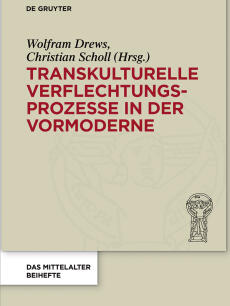Entanglement in the Early Modern Period

This book focuses on transcultural processes of entanglement in the early modern period. Entanglement has been on the agenda of scholars active in global history for some time. One of the advantages of the concept is the fact it does not refer to a unidirectional process (such as globalization). Furthermore, the term entanglement denotes specific links between social or territorial units, which appear to be different from each other. Moreover, by using the term entanglement we avoid the suggestion that particular societies or cultures at large might be interwoven; on the contrary, links and connections may be limited to certain areas or periods of time, being distributed unevenly across time and space. We can detect moments of entanglement and disentanglement in specific practices, including the composition of texts as well as handling material artifacts. Religious and political authorities often used artifacts such as books, manuscripts, buildings, textiles or images to enhance their legitimacy or to mark themselves off from others. In certain contexts, religious buildings and liturgical objects were adapted and reappropriated by adherents of other religions; religious sites attracted visitors from different religious and cultural backgrounds, religious norms affected aspects of everyday life such as clothing, medicine or food regulations. Use of religiously charged artifacts entailed definitions of in-groups and out-groups, everyday use of objects drew communities close to each other, but it also drove them apart. These questions are discussed in the volume with reference to specific examples from the middle ages and the early modern period.

Subjects treated include the relations between Byzantium and Northern Europe, anti-Latin sentiments in late Byzantine discourse, the rule of Latin crusaders in the Levant, diplomatic ceremonial and greeting practice at the Mughal court, the entangling and disentangling of Islam and Christianity in the churches of Castile and Aragon, material evidence for Jewish-Christian entanglements in the medieval German Empire, entangled histories of the medieval German coronation regalia, entanglement and disentanglement as evidenced by visual expressions of late medieval Ashkenazi existence, and processes of entanglement between Eastern and Western Christianity in sacred art of medieval Cyprus. Theoretical contributions treat terminological problems of epistemological models in medieval studies as well as the interrelationship of cultural entanglement and historical narration.

